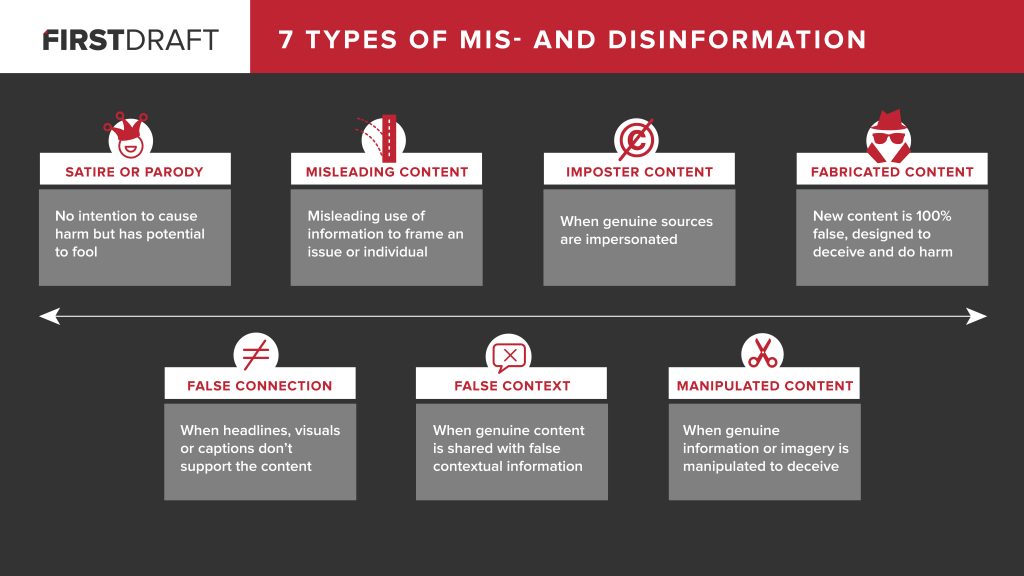Misinformation vs. Disinformation
What is the Definition of Misinformation and Disinformation?
• Misinformation is false, or out-of-context information that is spread without intent or malice.
• Disinformation is false information purposefully designed and spread to promote a falsified narrative or agenda.

How are both of these a problem for social media users?
Both of these are issues for social media users because they can influence opinions and be spread very easily and rapidly without being fact checked. This false information often appeals to pre-existing biases and incites powerful emotions causing it to go viral very quickly. Misinformation online can be information that is not properly sourced and gets spread without being fact checked.
Politics, health news, and climate information are some of the topics which misinformation or disinformation has become increasingly spread about.
How are they being spread on social media?
Misinformation and disinformation can be spread through all social media platforms: in posts, stories, reels, or even live streams. When people repost one of these sources of content without fact checking it, there is always a chance the information being promoted is false.

How is AI involved with the spread on social media?
AI algorithms can promote content the more it is liked, shared, and viewed. Thus, false information that incites powerful emotions can be promoted to reach a wider audience or more vulnerable audience through these algorithms.
Video and Audio Plays a Large Role in the Problem.
Audio and videos distributed without context can often be misleading or miscited as they capture very specific instances in time and may not include the whole situation. This is a part of misinformation. Additionally audios and videos can be editied. CNET says that deepfakes of audio and videos are going to become an incresing threat in the upcoming years. Deepfakes typically start out as disinformation because they are designed with malicious intent, yet they can also be misinformaiton as unsuspecting people may share the video thinking it is real.
Who is spreading Misinformation and Disinformation and why?
Anyone can unintentionally spread misinformation. It could be in any unverifiable source that gets distributed across the internet. Disinformaiton is usually spread by people who have an agenda and would like to incite a reaction among viewers. Additionally false information can be spread about online platforms by algorithms that promote liked, viewed, and shared content.

Why do people fall for it, and what can we do?
People who are unsuspecting may be too caught up in the content of the information to decide to question it. In the world of fast-moving digital platforms where there is seemingly endless news to read and get caught up on. It can seem impossible to fact check or question everything you read. So many people choose to not investigate what their sharing or confirm its validity before beliving it. But not all is lost. Many people are becoming aware of this issue and have taken the initiative to try and correct their informaiton. News sites such as The Conversation, the The Manila Times, and New York Post are providing awareness and information to help combat fake news and false informaiton.
